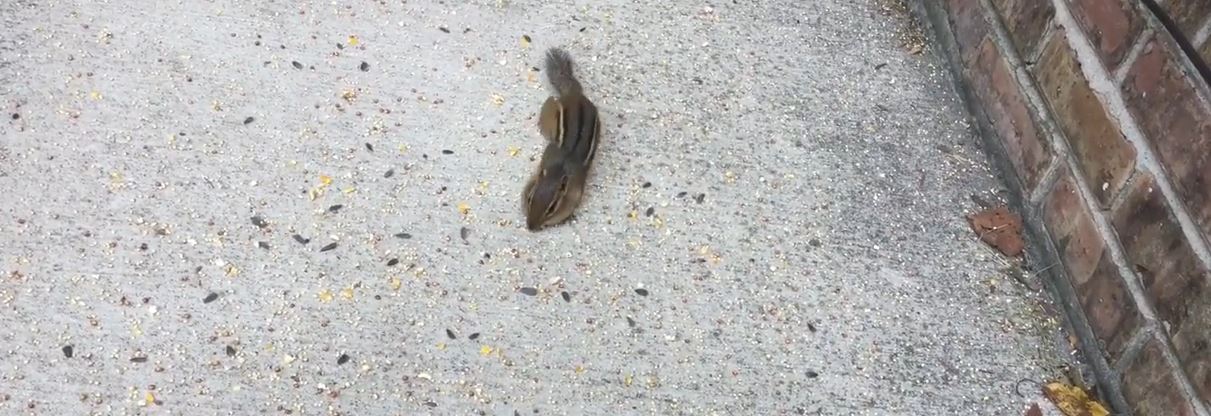About Chipmunks: Appearance, Biology, Life Cycle, Habitat, Diet, And Behavior

Chipmunks are related to squirrels and despite their reputation of being adorable, they can be a huge nuisance when they take up residence on your property. Most chipmunks are native to America with one species found in a few locations across Europe and Asia, which is where you will find the Siberian chipmunk. This means that Americans have a reasonable chance of finding chipmunks in their yard. Learn more about these animals to recognize the signs that they have made your property into a home and prevent them from causing damage.
Appearance
You are most likely to see North American chipmunks, which have red fur with stripes in light brown along their back. The exact appearance and coloration will vary by species, with the main color being somewhere between reddish-brown and gray and the stripes being light and dark. The smallest chipmunk breed is only 7.2 to 8.5 inches long and 1.1 to 1.8 ounces while the largest can be up to 11 inches long and 4.4 ounces. The average chipmunk, however, will have a three-inch tail and a body that is two to six inches long and weigh about one pound.
Their underparts have white fur. The tail on chipmunks is usually brown with some black by the tip. They are known for bushy tails that are two to five inches, glossy and large eyes, stripes, and pudgy cheeks. Chipmunks have four claws on their front paws to help them dig.
Biology And Life Cycle
Mating season takes place in the spring with a possible second mating during the early summer depending on the species. Chipmunks have a 30-day gestation period and give birth to a litter containing between two and eight babies. At birth, the chipmunk pups are pink, blind, and hairless. They are a size comparable to jelly beans when born. Mothers are incredibly protective of their young, searching frantically for missing babies.
The young will then remain with their parents until they are about two months old. At this point, they will gather food to last them through the winter. In the wild, chipmunks live between two and seven years.
Habitat
These animals are known for creating an extensive system of burrows under the ground. They may measure over 3.5 meters long and contain multiple entrances, each of which is well-concealed. This lets the chipmunks stay away from predators with ease. The burrow of a chipmunk contains a designated area for sleeping containing shredded leaves and this will be very clean. Chipmunks are organized, keeping their feces and nut shells in refuse tunnels. Food typically remains in the lowest of the tunnels as this helps it stay fresh and cool.
You will typically see chipmunks running through undergrowth but they live in a wide range of areas. They can thrive in shrubby deserts, alpine forests, and everything in between. Depending on where they live, chipmunks may turn logs, bushes, or nests into their home.
Diet
Chipmunks have a nice varied diet. They are omnivores that enjoy seeds, nuts, mushrooms, plants, frogs, eggs, and birds. During the fall, chipmunks work to collect and store food in their burrows so they can eat it during the winter. Depending on the species, chipmunks may have multiple food caches. They will transport the food in their cheek pouches. By chewing on plant stalks as well as tree trunks, chipmunks help nature by dispersing spores so the plant can spread and grow. They also do the same thing with seeds when eating berries and fruits.
Behavior
When searching for food, chipmunks typically gather along the ground, specifically in areas where they can hide in logs, rocks, and underbrush. This lets them stay out of sight of predators, including snakes, weasels, coyotes, foxes, and hawks.
Despite storing food for winter, chipmunks do hibernate. They haven't evolved to store fat, however. As such, they occasionally wake up and eat some of the food they have stashed. When they are hibernating, chipmunks appear to be dead. Their heartrate may get as low as 4 beats per minute (compared to 350 beats per minute normally) and their body temperature will get down to 40 degrees Fahrenheit (as opposed to their normal 94 degrees). Because chipmunks need to be in colder areas to hibernate, some experts believe they may no longer hibernate as temperatures rise due to global warming.
Chipmunks make a birdlike chirp that is shrill and typically repeated. They make this noise when they notice at threat and as a mating call. Experts have determined there are three types of calls, known as the startle call, deeper chuck, and chip. Chipmunks typically stay to themselves, except during mating season.
This is also one of the species which is very fast and lively. In addition to chirping, chipmunks communicate by waving their tails around. They are most active at dawn or dusk and will spend the majority of their days foraging. Each chipmunk can even gather 165 acorns in a single day.
Read the Pest Wildlife Home Page page for helpful information and to learn more about About Chipmunks: Appearance, Biology, Life Cycle, Habitat, Diet, And Behavior

